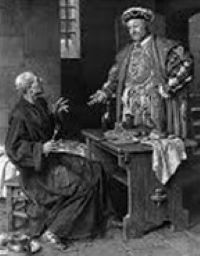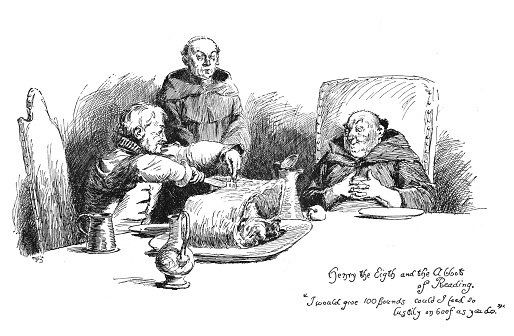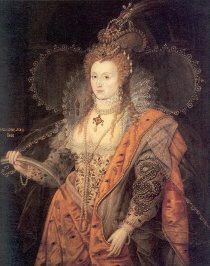Certainly during Queen Elizabeth's reign her Body Guard were known as 'Beefs' as it shown in the 1571 and 1572 confessions respectively when Edmund Mather and Kenelm Berney were involved in the plotting to overthrow and indeed assassinate Queen Elizabeth. Mather’s confessions are below but in both he describes the Body Guard as ‘Beefs’. Both Mather and Berney were executed on 13 February 1572. In 'The History of the Reign of Edward the Sixth, Mary and Elizabeth Vol 2, pg 266'. it states:
‘….Regicide in some aspect presented the most temptation. " To kill a sovereign would make their fame immortal". “The Queen's Beefs” were poor creatures, a handful of determined men could easily dispatch, and the rest of the household were, "perfumed minions” such as the vile woman kept about her to feed her fantasy.’
‘….In his first conversations with Berny, Mather said, ‘If the court were the town, I would undertake to take the Queen and all her true men, with two hundred gentlemen; aye, with half the number’. This talk he used many times with me. He said the guard, calling them the Queen’s beefs, might soon be dispatched.’
Notwithstanding this earlier dated evidence I sought to investigate the alleged origin of the term ‘Beefeater’ that is most regularly quoted. One involving Count Cosmo III when he visited England in 1669. In Thomas Preston’s book 'The Yeomen of the King's Body Guard 1485-1885' states:
‘The earliest credible documented reference of the nickname 'Beefeaters’, appears to have its origin in 1669, when Count Cosmo, Grand Duke of Tuscany, was in England, and, writing of the size and stature of this magnificent guard, said, 'They are great eaters of beef, of which a very large ration is given them daily at the Court, and they might be called beefeaters.’
The Count’s visit is recorded in a book called ‘Travel of Cosmo the Third Grand Duke of Tuscany Through England, During the Reign of King Charles The Second (1669)’ written by his friend and companion on the visit Count Lorenzo Magalotti. He relates the story of the ‘beef-eater’ thus (page 308):
‘….employed to mount guard at the gates of the palace, both on the side of St James’s Park and that of Whitehall Palace, and to escort his majesty whenever he goes out on horseback or in his carriage through the city. In the hall called the Guard-Room, is the guard of the Manica or Sleeve (yeomen of the guard) consisting of two hundred and fifty very handsome men, the tallest and strongest that can be found in England; they are called, in jest, Beef-eaters, that is, eaters of beef, of which a considerable portion is allowed them by the court every day.’
In Count Magalotti’s account it’s uncertain if the nickname Beef-eater was coined by Count Cosmo or already in existence given that the text states‘…they are called, in jest, Beef-eaters, that is……’
The account is written as though the term beef-eater is already in general parlance. However, it’s hardly surprising that the Count was so taken with the Yeomen at St James’s Palace and their rations when you see their daily table.




